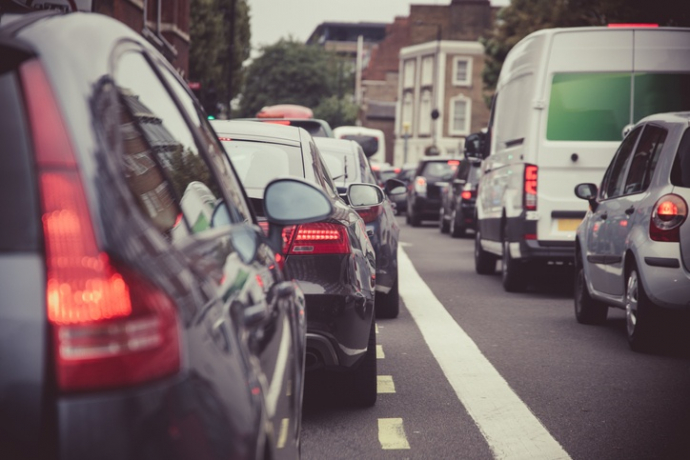
Next time traffic prevents you crossing a street or a parked car blocks the pavement ahead, remember these perils of urban living weren’t always regarded as the norm.
In the 1920s, cars were a relatively new phenomenon and the public reacted to a soaring death toll with natural outrage. Newspapers labelled killer drivers as ‘remorseless murderers’ and likened the threat they posed to an epidemic disease. In Detroit, angry mobs would drag dangerous drivers from their cars.
Bells on fire stations, churches, schools and City Hall rang twice a day in memory of road fatalities. Towns printed ‘murder maps’ showing locations of road deaths. Two huge ‘safety parades’ featured wrecked cars occupied by bloodied mannequins, drivers dressed as Satan, and thousands of children dressed as ghosts – each representing a road death that year. The processions were followed by grieving mothers wearing a white or gold star to indicate the loss of their child.

Cities like Detroit were eventually swamped by cars
The car makers tackled a looming PR disaster head on, spinning the story that pedestrians hit by cars were at fault through their own carelessness or guilty of the newly-coined offence of jaywalking.
A culture of victim blaming was born, and a fallacy that road deaths are unavoidable accidents by drivers persists to this day.
It’s a theme we explore in our documentary Stop Killing our Children, which takes it’s name from the Dutch protest movement of the 1970s.
The transformation of our cities from spaces were pedestrians had priority to the domination of motordom is explored in this extract from Peter Norton’s book “Fighting Traffic: The Dawn of the Motor Age in the American City.
Local police tended to blame motorists for pedestrian traffic casualties. With their traditional mission of defending custom and seeking equity, police were unwilling to abridge pedestrians’ rights to the free use of city streets. New York police magistrate Bruce Cobb in 1919 defended the “legal right to the highway” of the “foot passenger,” arguing that “if pedestrians were at their peril confined to street corners or certain designated crossings, it might tend to give selfish drivers too great a sense of proprietorship in the highway.” He assigned the responsibility for the safety of the pedestrian — even one who “darts obliquely across a crowded thorofare” — to drivers. Most American police would have agreed with the Ontario authorities who regarded pedestrians as victims of “an unfortunate attitude of mind which belongs to some drivers and which assumes that the pedestrian should get out of the way of the vehicle.”
Norton argues that the transformation of streets into car-centric spaces was not a natural evolution, a side effect of technological progress, the choice of a democratic majority, nor the product of a free market.
The ethical choice
The ETA was established in 1990 as an ethical provider of green, reliable travel services. Over 30 years on, we continue to offer cycle insurance , breakdown cover and mobility scooter insurance while putting concern for the environment at the heart of all we do.
The Good Shopping Guide judges us to be the UK’s most ethical provider.

0 Comments View now